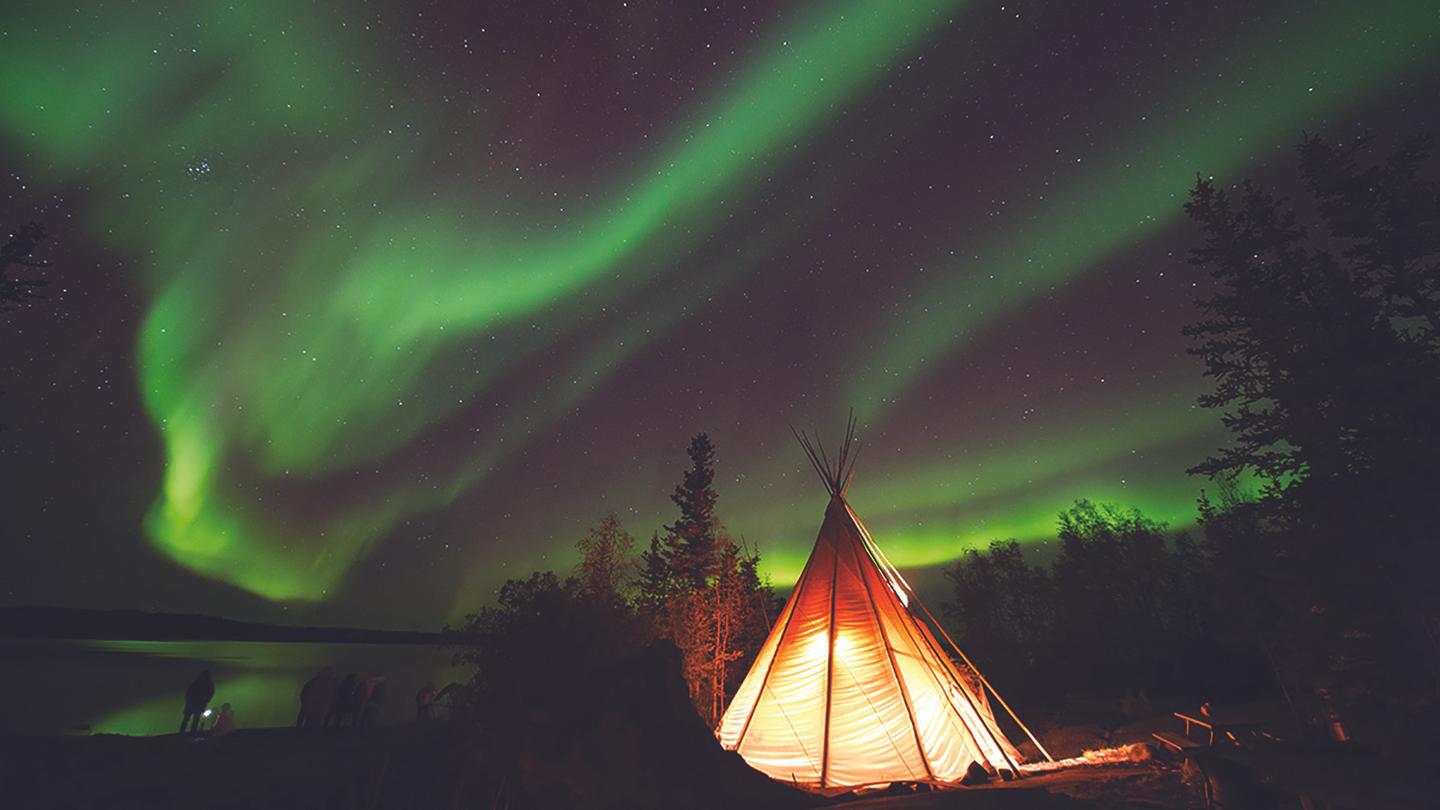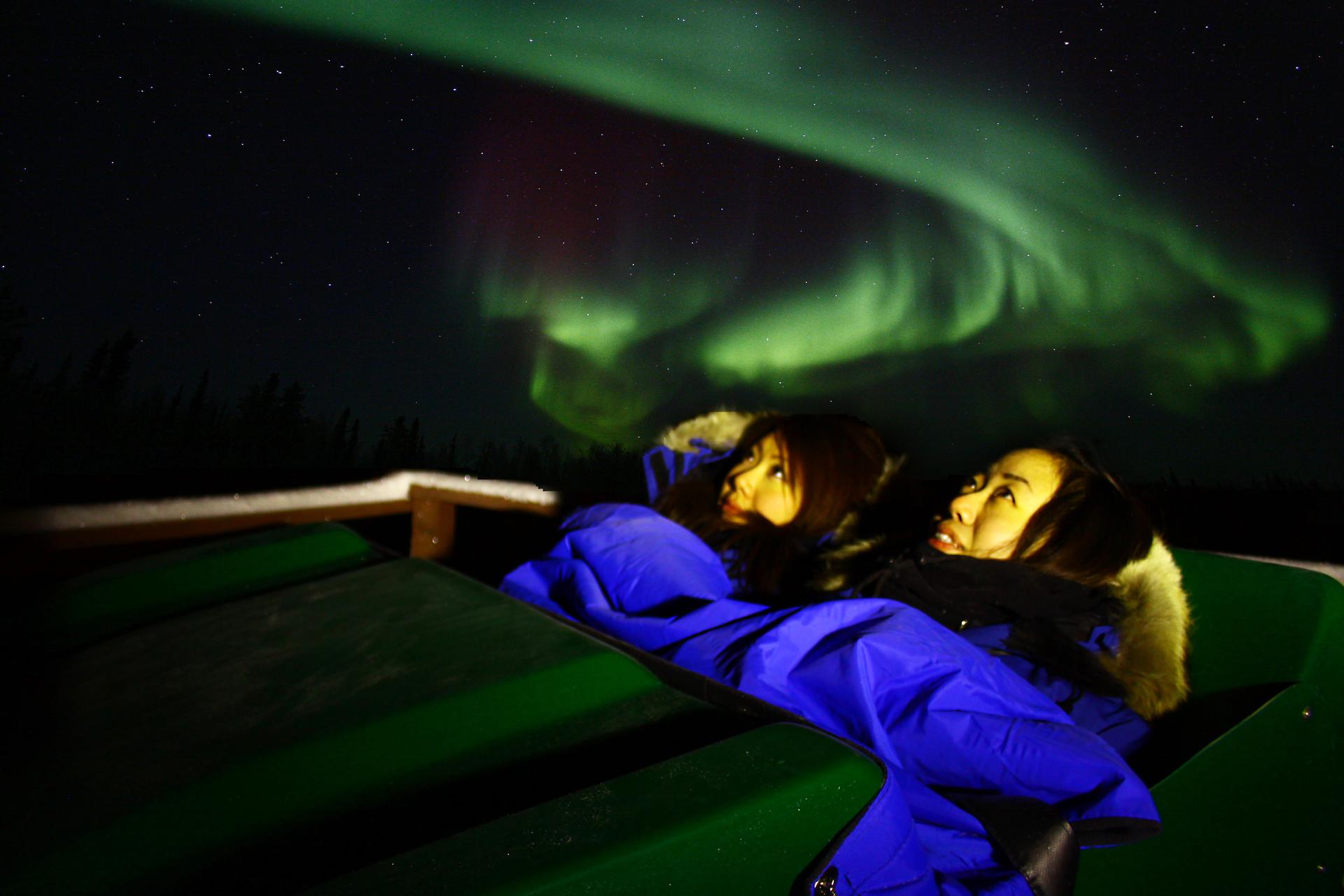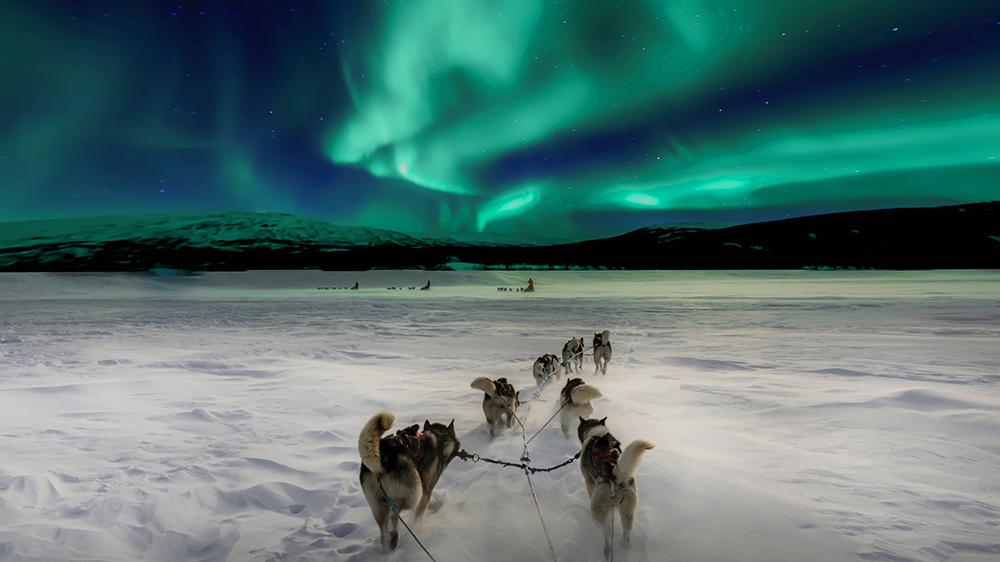Nightlight – How to see the northern lights with an Indigenous eye

By: Debbie Olsen
Viewing the northern lights is all about vision. It’s a dance that starts out slowly and progresses through a long dark northern night. Sometimes it looks like spotlights, other times ribbons of light swirl and twirl through the stars. On nights when the aurora borealis burns brightest, dramatic green and red waves of light cascade from one side of the horizon to the other in a soul stirring display. No matter how the aurora borealis presents itself, it needs to be seen with two eyes to be truly appreciated.
Canada’s Indigenous peoples have a unique way of viewing the world and all things in it – including the northern lights. The Mi'kmaw word, “etuaptmumk,” means “two-eyed seeing.” One eye sees using Indigenous knowledge and ways of knowing. The other eye sees with the strength of Western knowledge. The Mi'kmaw believe that we must learn to use both eyes together. If you see the northern lights without an Indigenous perspective, you are only using one eye and missing out on seeing a complete picture.
Why You Should See the Northern Lights in Canada
Canada is home to most of the world's best aurora-viewing locations. Between 80-90 percent of the accessible land inside the auroral oval, the region with the greatest geomagnetic activity and the brightest and most frequent northern lights displays, is in Canada. The combination of northern latitude and low light pollution make it one of the best places on the planet for viewing the aurora borealis or northern lights. Many different Indigenous groups live in Canada’s northern reaches and each nation or group has its own beliefs and legends to explain the phenomenon of the northern lights. Exploring the legends and experiencing Indigenous culture is an important part of a Canadian northern lights viewing trip.
When to Book a Canadian Aurora Viewing Trip
The northern lights are most visible from mid-August to mid-April and the best time to view them is between 10 pm and 3 am. It’s possible to see an aurora during other months of the year, but the best viewing occurs during those months. Dark, clear skies are essential for aurora viewing. Canada’s far north is known as “the land of the midnight sun,” because it doesn’t get fully dark during the peak summer months. Certain websites recommend winter as the best time for aurora viewing, but some tour operators say otherwise. “The warmer the weather, the better the aurora,” says Joe Bailey, owner of North Star Adventures Ltd in Yellowknife. "Warm weather is more conducive to aurora activity giving us stronger and brighter displays early in August and September, our summer Aurora season."
Where to See the Northern Lights in Canada

Photo credit: Aurora Village
There are many locations in Canada where you can view an aurora, but locations inside the auroral oval provide the brightest and most frequent northern lights displays. Two of the best and most accessible places to see the northern lights in Canada are Yellowknife, Northwest Territories and Whitehorse, Yukon. Yellowknife has been dubbed the "Aurora Capital of North America," thanks to its prime location, clear skies, excellent northern lights tour operators, and frequent aurora activity. Travelers to Yellowknife have a 95% chance of spotting the northern lights. Whitehorse, Yukon - also inside the auroral oval - is another prime aurora viewing hot spot. The Yukon has famously dark skies, an abundance of clear nights, and excellent guides and tour operators. Both locations have large Indigenous populations who have lived on the land since time immemorial.
How to Increase Your Chances of Seeing the Northern Lights
Scientists have learned how to predict auroras based on the sun's activity, geomagnetic storms, and other factors. There are several websites that provide fairly accurate northern lights forecasts. Aurora Forecast is a good one in the Yukon and Astronomy North provides forecasts for Yellowknife. Booking your aurora viewing trip at the right time is essential. A darker sky is better for aurora viewing. Avoid booking during a full moon and make sure you get outside the city and away from ambient light to ensure better views. Booking a tour with an expert guide or a tour operator can also help.
Learning the Legends of the Northern Lights
For thousands of years, mankind has tried to explain the magical dancing lights of the aurora borealis and learning the legends of the lights is almost as fascinating as seeing them. An aurora tour with B. Dene Adventures in Yellowknife is also an Indigenous cultural experience where you can see the aurora borealis and learn the local legends. "The B. Dene Adventures camp is uniquely situated directly under the northern lights and aurora viewing is outstanding," says Bobby Drygeese, owner of B. Dene Adventures. "Our aurora tours are unique because they include traditional drumming, cooking fish over a fire and the sharing of our language and culture. Guests love speaking with our Elders and hearing the Dene legends and stories."
A Village with Heated Seats
If you want to watch the northern lights in comfort, Aurora Village outside Yellowknife is the place to go. The Indigenous-owned village of 21 traditional teepees and hilltop viewpoints surrounds a pristine lake. You can warm up around a woodfire and enjoy hot drinks inside a cozy teepee while you wait for the northern lights to come out and dance. They also have heated outdoor seats that swivel to offer 360-degree views.
Aurora Viewing by Dog Team

Photo credit: North of 60 Aurora Adventures
Before there were cars and snowmobiles, there were dogsleds. There was a time when most Indigenous People in the far north travelled by dogsled in winter. Nowadays it's not so common. North of 60 Aurora Adventures Inc. in Yellowknife offers one of the most unique aurora tours out there. Guests can travel by dogsled across a secluded frozen lake to watch the aurora. Hot beverages and Bannock are served in a heated teepee or trapper's tent at the end of the tour.